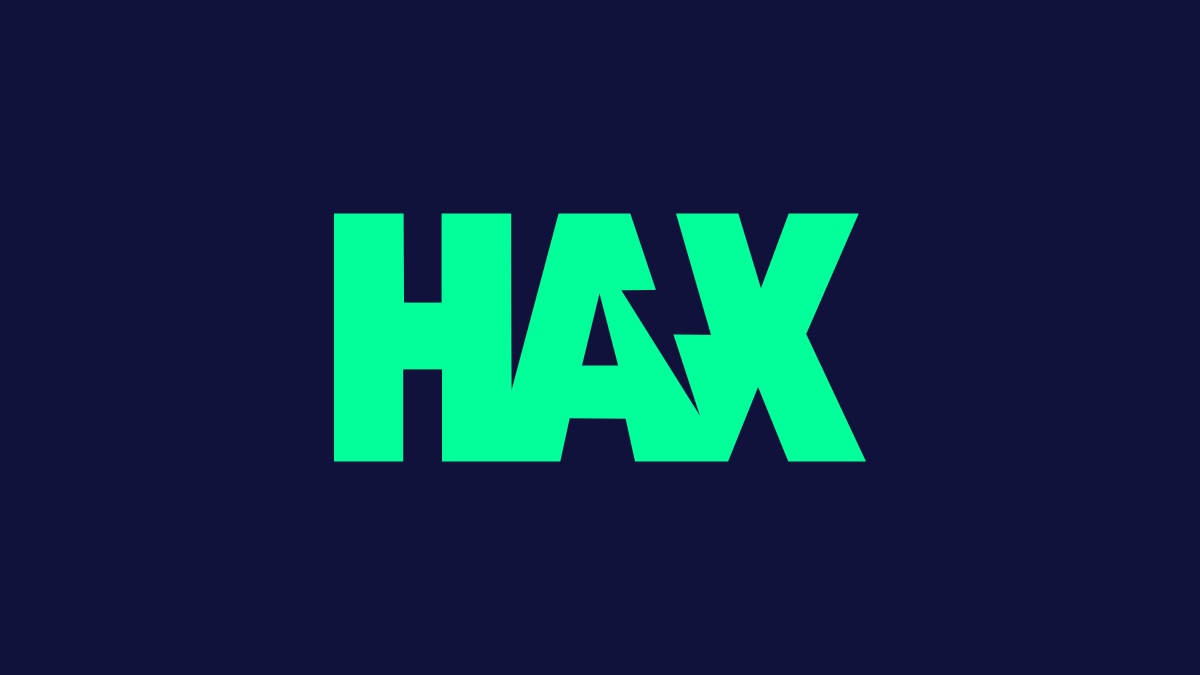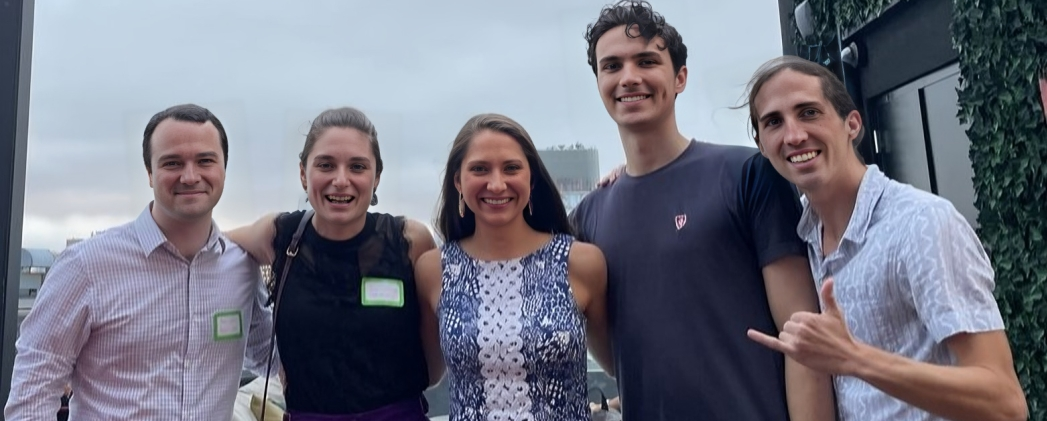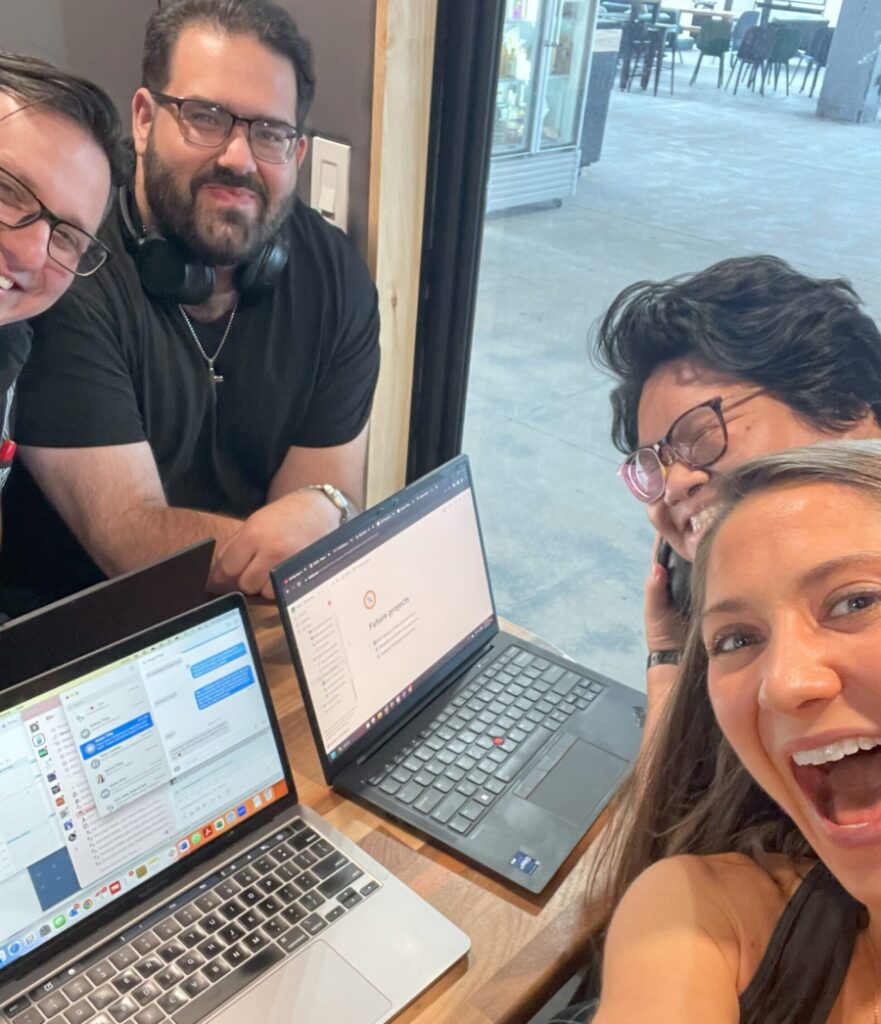Introducing Sloane Tilley and DIA
Q: Could you introduce yourself and your startup?
A: My name is Sloane Tilley. I’m the CEO and co-founder of DIA. The name DIA means “day” in Spanish, inspired by my two co-founders who are from Mexico. Our mission at DIA is to revolutionize the way we approach health monitoring by making biomarker testing accessible to everyone, every day. We’re focused on developing a device that enables daily health insights, making it easier for individuals to stay informed about their well-being.
Q: How did the idea for DIA come about?
A: The founding story of DIA is deeply personal. About seven and a half years ago, after getting married and returning from my honeymoon, I experienced a life-changing accident. While riding with the UNC triathlon team, I was hit by a car. I ended up in the hospital with a broken back, a broken leg, and severe PTSD, particularly from anything approaching my left shoulder.
This incident significantly impacted my academic and athletic pursuits, as I struggled without a way to objectively measure the toll these stressors were taking on my body. The lack of accessible testing led to further complications, including two knee surgeries that might have been preventable. The core frustration was the inability to return to my daily routines on my own terms due to the absence of reliable data about my mental and physical condition.
Motivated by this experience, I became passionate about developing a solution to provide people with real-time, insightful data about their bodies in a non-invasive manner. Our focus is on utilizing saliva and sweat for testing, eliminating the invasive nature of blood tests, and delivering results within minutes. This vision is what led to the creation of DIA, aiming to empower individuals with real-time insights into their health.
Why HAX Accelerator?
Q: What motivated you to join the HAX?
A: Our decision to join HAX in January 2023 came after careful consideration of where we were with our product development. HAX emerged as the lead for our pre-seed funding round, positioning themselves as the ideal partner for us. Their specialization in hard tech was a significant draw, especially given the common adage that “hardware is hard.”
At the time, pursuing a hardware-based startup was not particularly popular, but HAX understood the challenges and what it takes to build a successful hardware company. They are committed to being long-term partners to their startups, which aligned perfectly with our needs.
To clarify the relationship between HAX and SOSV, HAX functions as one of the accelerators under the SOSV umbrella, focusing on hard tech. SOSV typically invests in companies through its accelerators, including HAX for hard tech, IndieBio for life sciences based in New York City, and another IndieBio in San Francisco for climate tech. This structured approach allows SOSV to support companies in these specific sectors effectively. The investment comes from SOSV but is facilitated through participation in the HAX program, meaning there isn’t separate funding from HAX and SOSV—it’s a unified investment from SOSV through the HAX accelerator.
HAX Application Process
Q: What did the application process for HAX look like?
A: The application process for HAX was quite thorough, resembling a standard due diligence procedure one might expect from a venture capital investment. It started with submitting a presentation deck, followed by a series of conversations with HAX’s team of experts. This team includes individuals with significant expertise, such as their PhD-level Chief Scientific Officer, Dr. Susan Shofer, who delves into the scientific aspects of your project, and Duncan Turner, the Managing Partner, who focuses on the business model and financials. Ji Ke, the Chief Technology Officer, examines the hardware components, among other project managers who assess various parts of the business.
These discussions are aimed at understanding your business comprehensively, identifying potential areas for improvement, and ensuring that the partnership would be mutually beneficial. For us, the process spanned approximately four to five months from the initial introduction to receiving the investment, indicating that applicants should be ready for a detailed and extended engagement. This approach, more akin to venture capital investment than a quick accelerator intake process, involves traditional due diligence, emphasizing the seriousness of their investment in your company.
Q: How competitive was the application process, and what distinguished your company enough to be selected for the program?
A: While I’m not privy to the exact number of applications HAX receives, making it difficult to gauge the competitiveness, being recognized as an SOSV portfolio company certainly carries significant weight in the venture capital community. This acknowledgment alone is a testament to our company’s potential and the esteem in which SOSV and HAX are held.
What likely set our company apart was the strength of our founding team. My co-founders are exceptionally talented individuals with complementary skills crucial for our product’s development. Our product comprises two main components: the testing strip or electrode, and the measurement device. Julio, with his PhD in electrochemistry, spearheads the development of the electrode’s chemistry. Fernando, a mechatronics engineer with experience in building IoT devices, focuses on the measurement device. This synergy of expertise and our shared passion for the project convinced HAX of our capability to bring this innovative product to market.
At the time of our application, we had only a basic working prototype, underscoring that early-stage investments are often bets on the founders themselves. Our team’s unique combination of skills and dedication to our vision likely played a pivotal role in our selection for the program, highlighting the importance of a strong founding team in attracting investment and support.
Inside the HAX Accelerator Program
Q: After being accepted, what is the HAX program like?
A: When we joined, the HAX program was in the midst of becoming more structured, coinciding with their move to a new facility in Newark. This new space is nothing short of amazing, equipped with wet labs, PCB prototyping facilities, 3D printers, and a fully staffed workshop designed to assist startups in building out their prototypes. Our entry into the program happened as they were just getting this space operational, so our experience was somewhat informal.
The program’s foundation includes weekly check-ins with your assigned project manager and the wider team, along with bi-weekly meetings with key figures such as Susan and Ji. These sessions are aimed at assisting in sourcing and prototype development, with a strong focus on advancing from an initial idea or a basic prototype to a more developed product stage, ready for seed funding.
Most companies entering HAX are at a pre-seed stage, similar to ours, possessing perhaps a proof of concept but usually pre-revenue. HAX is particularly skilled at helping startups conceptualize and develop their Gen 1 product. While the initial product iteration may not be polished or flawless, the program is designed to transition ideas into functional prototypes, ready to be refined and presented to potential investors. This emphasis on practical development and prototype advancement is what makes HAX invaluable for hard tech startups at an early stage of their journey.
Q: How was mentorship structured within the HAX program?
A: In the HAX program, the approach to mentorship is quite unique and doesn’t revolve around a traditional pool of mentors to choose from. Instead, we were granted access to the entire HAX team from the outset. This arrangement is highly beneficial because the nature of your needs will inevitably evolve as you progress through product development. The availability of the HAX team to address changing requirements ensures tailored support throughout the journey.
Additionally, the broader SOSV network offers extensive opportunities for mentorship across various sectors. Being part of HAX (or IndieBio, for that matter) opens doors to a wealth of cross-disciplinary events and networking opportunities. For example, although DIA is fundamentally a hardware company, our work has life science applications, enabling us to connect with mentors from the life science field through IndieBio. This exemplifies the open and inclusive community within the SOSV ecosystem, offering access to a diverse range of expertise and networks.
Understanding HAX’s Funding Structure
Q: What does the funding arrangement look like with HAX?
A: HAX tends to have a standardized approach to funding for companies that join the program. The investment typically includes a mix of cash and in-kind support, which encompasses access to their facilities like the workspace, labs, and 3D printing services. This blend of resources is designed to help startups develop their prototypes and advance their product development efficiently.
For our specific case, HAX provided $250,000, with $150,000 in cash and the remaining $100,000 in in-kind support. This package aims to address both the immediate financial needs and the practical, logistical requirements of building a hardware startup.
Regarding equity, HAX took approximately 12% equity in our company as part of the deal. They also remain open to participating in follow-on rounds for companies they believe have significant potential, although they typically do not lead these rounds. This openness to ongoing investment underscores HAX’s commitment to supporting startups beyond the initial accelerator phase, recognizing the long-term value of nurturing growth and development within their portfolio companies.
Achieving Milestones and Overcoming Challenges
Q: Can you share a significant milestone achieved during your time with HAX?
A: Our journey with HAX is ongoing, and we view our relationship with them as a long-term partnership. A standout milestone for us was conducting our first in-field test, a critical step that HAX helped us achieve by guiding our progression from concept to a functional product. This accomplishment was not just about proving our technology but also marked a significant leap towards commercial viability. Following this milestone, we managed to secure our first two revenue-generating contracts, which has been incredibly exciting for us.
The support from HAX has been instrumental in reaching these achievements, and we’re optimistic about continuing this partnership. Their role in our development extends beyond just the initial acceleration phase; they’ve been true partners in every sense, contributing significantly to our progress and success.
Q: Have you encountered any unexpected challenges during your time with HAX?
A: Navigating the HAX ecosystem has been a journey filled with learning opportunities, particularly in the realm of proactive communication. With HAX supporting a wide array of companies in its portfolio, one of the initial challenges we faced was learning to communicate our needs effectively and concisely. It was crucial for us to articulate what we were focusing on and what specific support we required at any given time.
Given the breadth of resources and expertise available within the HAX and SOSV network, identifying the right person or resource for our immediate needs sometimes presented a hurdle. We had to hone our ability to assertively seek out the appropriate assistance, acknowledging when a certain resource wasn’t necessary at the moment but might be in the future. This process involved a lot of on-the-spot learning about navigating a rich ecosystem while maintaining clarity on our priorities and needs.
This challenge, while unexpected, ultimately strengthened our team’s communication skills and our understanding of how to leverage the vast resources of the HAX accelerator to our advantage. It taught us the importance of clear, direct communication in an environment rich with potential avenues for support and development.
DIA’s Current Status and Future Aspirations
Q: What is the current status of DIA and your goals moving forward?
A: Currently, DIA is at a pivotal and exciting stage of its development. Over the past year, we’ve secured over $2 million in funding from the US Department of Defense, which has been instrumental in scaling our research and development efforts. From the original trio of co-founders, we’ve expanded our team to a full-time staff of six, marking a significant growth in our operational capabilities. Just last Friday, we officially opened our seed funding round, aiming to raise $3 million. This move is driven by our recent milestones, including our first revenue generation and a successful in-field test, which we believe position us well to accelerate our growth. The decision to seek additional funding at this juncture is a strategic step to capitalize on our current momentum, with the goal of scaling our operations more rapidly and expanding our impact in the market.
Final Advice for Prospective HAX Applicants
Q: Do you have any advice for founders considering applying to HAX?
A: For founders contemplating applying to HAX, my primary piece of advice is to actively engage with the existing network of HAX founders. Many of us within the program are open to sharing our experiences and offering insights into what the journey with HAX entails. This openness among founders can provide valuable perspectives and help demystify the application process and program expectations.
Additionally, the New York area, including regions adjacent to the city, is currently thriving as a hub for deep tech ventures. This vibrant ecosystem offers a wealth of opportunities for networking, collaboration, and growth. Leveraging this local environment, in conjunction with reaching out to the HAX community, can significantly benefit aspiring applicants. Engaging with the network not only helps in understanding the accelerator’s culture and expectations but also in gauging how your startup could fit and benefit from the program.



